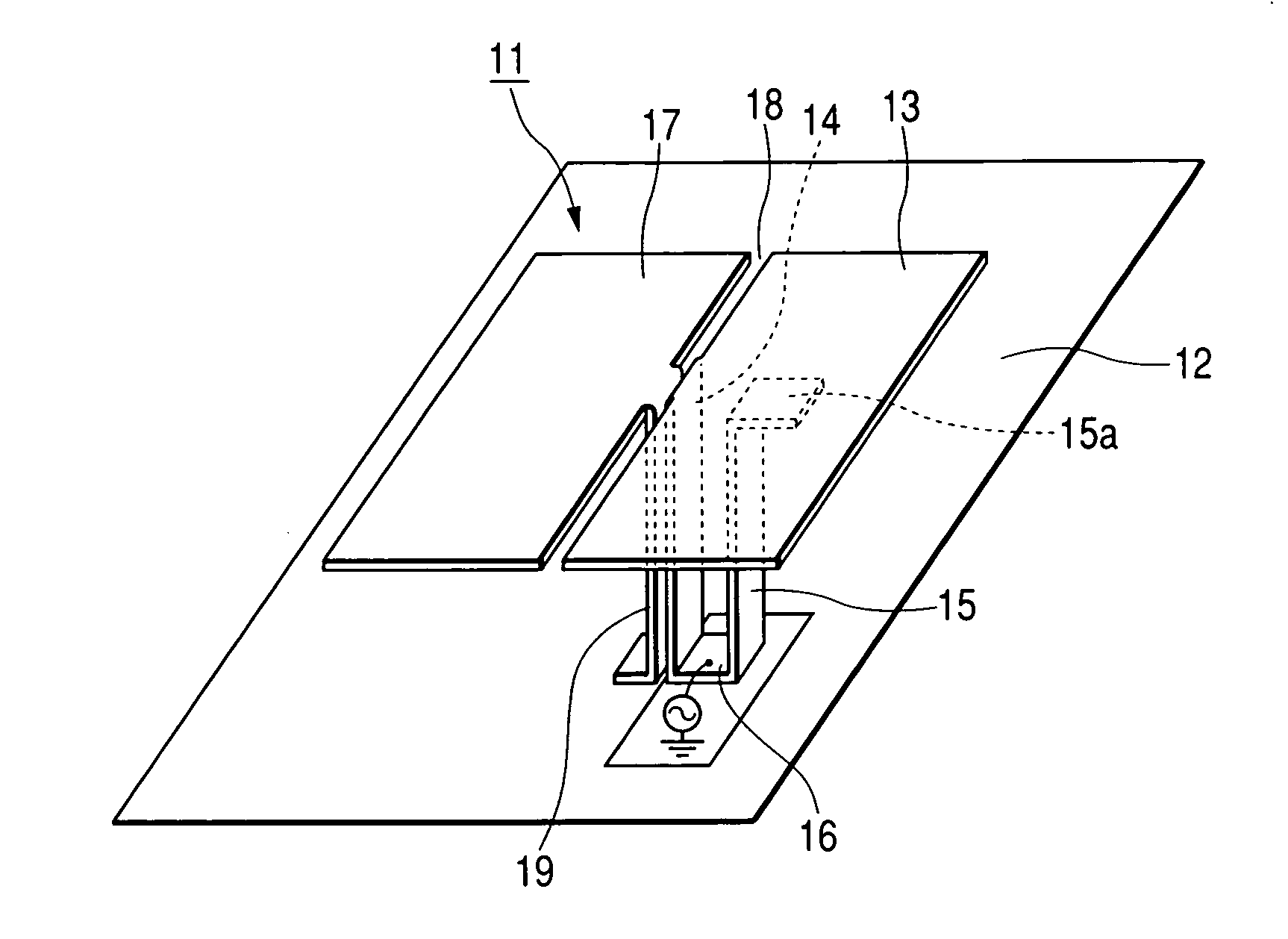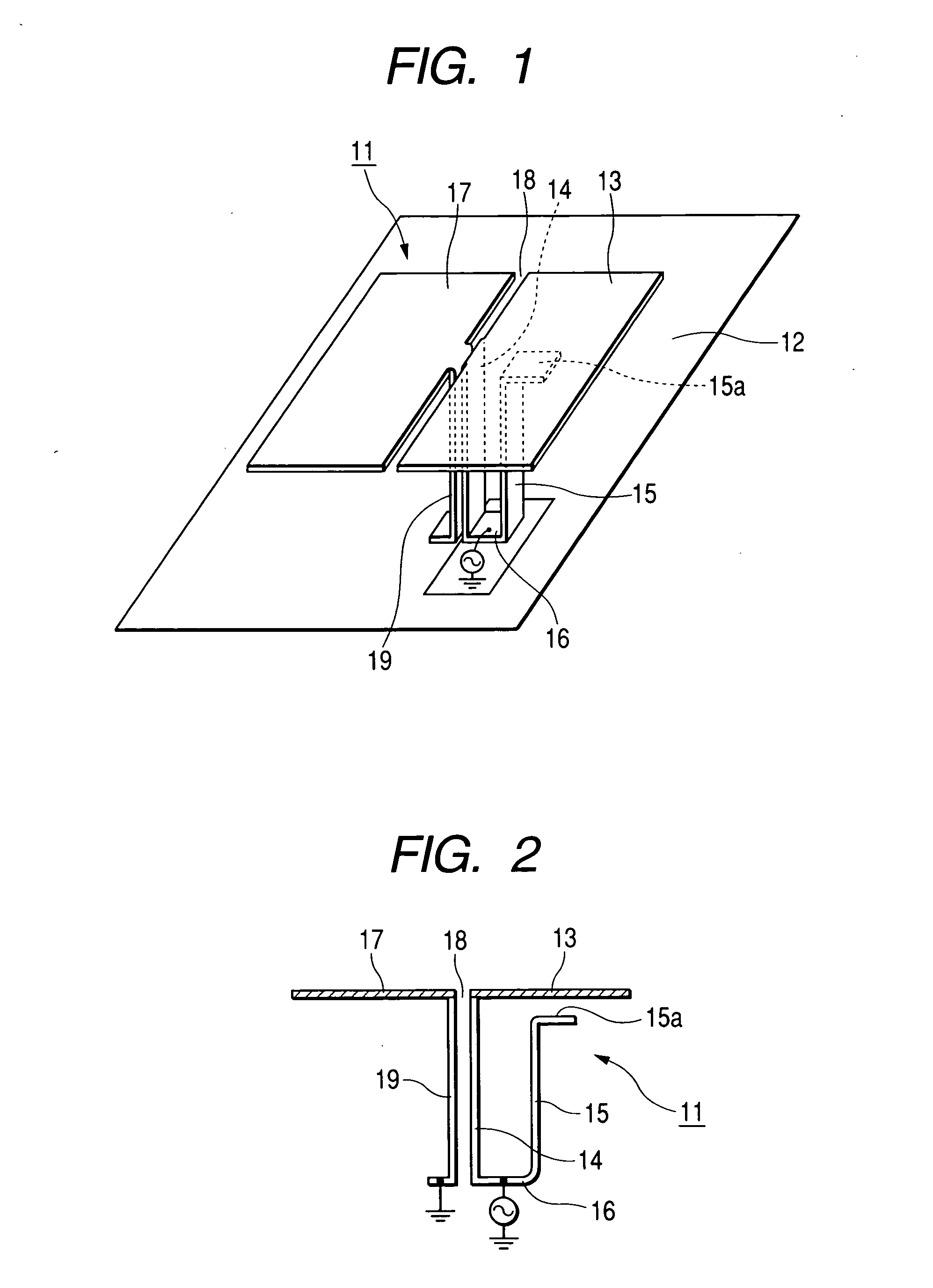Dual-band antenna having small size and low height
a dual-band antenna, small technology, applied in the direction of resonant antennas, elongated active element feeds, antenna earthings, etc., can solve the problems of obstructing the miniaturization, narrow resonant bandwidth, and inability to secure the desired bandwidth when using the low band, so as to enhance the dramatic gain of electric waves, easy to secure the desired bandwidth, and increase the uniformity of polarized waves
- Summary
- Abstract
- Description
- Claims
- Application Information
AI Technical Summary
Benefits of technology
Problems solved by technology
Method used
Image
Examples
first embodiment
[0033] Embodiments of the present invention will now be described with reference to the drawings. FIG. 1 is a perspective view of a dual-band antenna according to the present invention, FIG. 2 is a partial cross-sectional side view of the dual-band antenna, and FIG. 3 is a characteristic view showing a return loss according to frequencies of the dual-band antenna.
[0034] A dual-band antenna 11 shown in FIGS. 1 and 2 is a metallic plate product by bending a conductive metallic plate such as a copper plate and is fixedly provided on a surface of a grounding conductor 12. The dual-band antenna 11 schematically comprises a first radiating conductive plate 13 arranged to oppose the surface of the grounding conductor 12 in an approximately parallel manner, a feeding conductive plate 14 extending approximately orthogonally from an outer edge of the first radiating conductive plate 13, a second radiating conductive plate 15 stood in approximately parallel to the feeding conductive plate belo...
third embodiment
[0042]FIG. 5 is a perspective view of a dual-band antenna according to the present invention, FIG. 6 is an explanatory view showing respective conductive plates of the dual-band antenna, in which an insulating base member is not shown, FIG. 7 is a plan view of the dual-band antenna, and FIG. 8 is a longitudinal cross-sectional view along the slit of the dual-band antenna, and FIG. 9 is a characteristic view showing a return loss according to frequencies of the dual-band antenna.
[0043] A dual-band antenna 110 shown in FIGS. 5 to 9 is used for a vehicle antenna, and a small-sized antenna in which the transmission and the reception of signal waves of the low band (for example, AMPS band of 800 MHz) and the high band (for example, PCS band of 1.9 GHz) can be selectively performed. The dual-band antenna 110 schematically comprises a supporting substrate 121 with a grounding conductor 120 provided on an entire surface of the rear surface, an angled tube-shaped insulating base member 111 d...
PUM
 Login to View More
Login to View More Abstract
Description
Claims
Application Information
 Login to View More
Login to View More - R&D
- Intellectual Property
- Life Sciences
- Materials
- Tech Scout
- Unparalleled Data Quality
- Higher Quality Content
- 60% Fewer Hallucinations
Browse by: Latest US Patents, China's latest patents, Technical Efficacy Thesaurus, Application Domain, Technology Topic, Popular Technical Reports.
© 2025 PatSnap. All rights reserved.Legal|Privacy policy|Modern Slavery Act Transparency Statement|Sitemap|About US| Contact US: help@patsnap.com



